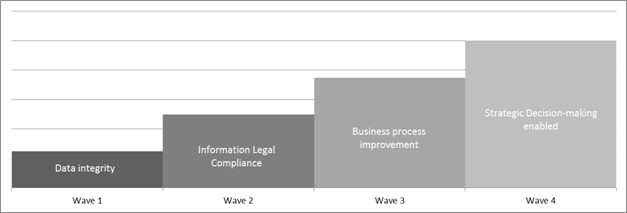American radio and television writer Andy Rooney once said: "Everyone wants to live on top of the mountain, but all the happiness and growth occurs while you're climbing it."
One of the most difficult questions to answer in the enterprise data warehouse/business intelligence (EDW/BI) space always seems to be: "What is the business value of an EDW?" It remains difficult to answer, as it is so difficult to quantify the business value in direct relation to the bottom-line, especially when the organisation's EDW initiative is still in its infancy.
Taking this quote into consideration, it can be applied to many organisations - every company wants to live on top of the mature 'EDW mountain' from day one. They expect that an EDW is something that can be built in a matter of months, and to immediately reap strategic benefits such as increased turnover, decreased cost, discovering untapped market segments, and then be able to formulate new marketing initiatives that clearly separates them from their competitors.
Once reality hits, however, and they realise the climb to the top of that mountain is steep and may take longer than anticipated, it suddenly becomes very hard to secure executive sponsorship and buy-in for such a large undertaking. This is most probably because they do not fully grasp the second part of Rooney's wisdom: "...all the happiness and growth (business value) occurs while you're climbing it".
All adding up
Experience teaches that there is true business value realised from the first phase of EDW development, and throughout each phase of increasing maturity. Each plateau of maturity brings with it a next wave of business value cumulating towards real strategic value.

Wave one of the business value is when the take-on of data into the EDW for the first time highlights critical data integrity problems within the organisation's operational systems. This usually leads to initiatives to optimise operational system user interfaces to enforce better information capturing disciplines, as well as necessary validations to ensure improved data quality and integrity.
Do not underestimate the real value of improved data integrity. Strategic decisions made based on "bad data" can be extremely detrimental to the organisation.
As data integrity becomes better and better, the next level of business value, wave two, which becomes evident, is the ability to enforce governance, security measures and auditing features on the data that improves legal compliance to Acts like the Protection of Private Information Act and the Consumer Protection Act.
Furthermore, the extreme laborious tasks to create legal compliance reporting in line with King III, but also reports to be submitted to various government agencies, can become increasingly more automated and less manual. Quantify the business value in man-hour cost savings to grasp the full potential of the business value here.
First fruits
Wave three is when the information in the EDW and all of the BI capabilities provided with starts to show its impact on the business. Information can now be analysed and explored like never before. However, before letting the visionaries loose to analyse in order to come up with new, innovative strategies, the lowest hanging fruit available is to analyse performance of the core business processes, identifying process inefficiencies.
By focusing on business process optimisation, one undoubtedly can discover opportunities to cut costs and improve customer services that have a direct impact on the bottom-line. Optimising business processes not only contributes to the bottom-line, but ensures sustainability of the company's operations.
Every company wants to live on top of the mature 'EDW mountain' from day one.
By the time wave four, business value, becomes evident, the organisation already has experienced significant business value from the EDW. Here, the business value of accelerated strategic decision-making due to information that is readily available for analysis and modelling may just well be the cherry on top of the cake.
At this stage, strategic analysts and decision-makers have:
* The confidence that they are basing their decisions on the best quality of data;
* Significantly less effort to gather, clean and prepare information before analysis and decision-making can commence (ie, highly skilled analysts spend less of their expensive time copying and pasting in Excel, and more time really analysing and understanding the variables represented by the information in the EDW);
* Far more powerful analytic capability that is empowered through sophisticated analytic tools in combination with the mature EDW; and
* Unlocked advanced analytic capability like data mining, predictive modelling, time-series forecasting, scenario and what-if modelling.
All of these wave four benefits can be successfully exploited to effectively set the company's strategic direction, and actively monitor implementation thereof to ensure growth of the bottom line.
Once the company is riding the final wave, there's nothing stopping it from continuously mining more and more business value from its EDW. It is at this point when standing at the top of the mountain and looking back, that it really becomes clear and appreciated that the business value was experienced continuously throughout the climb, because "all the happiness and growth occurs while you're climbing it".
Share